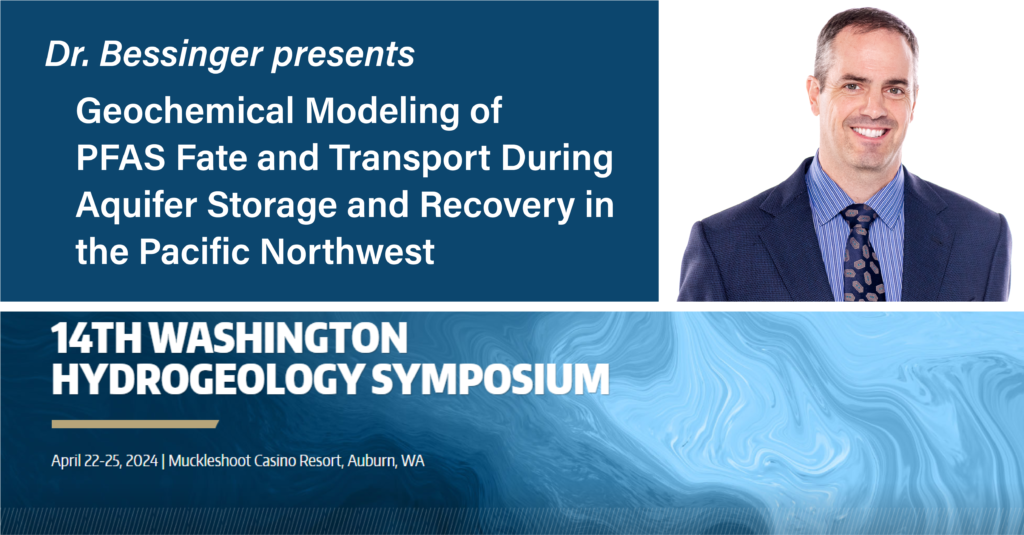
Brad Bessinger, PhD, RG, Principal Geochemist will be presenting on Geochemical Modeling of PFAS Fate and Transport During Aquifer Storage and Recovery (ASR) in the Pacific Northwest at the Washington Hydrogeology Symposium taking place from April 22-25, 2024 in Auburn, Washington. Learn more about the presentation below and about Summit’s geochemistry capabilities here.
Abstract
Geochemical Modeling of PFAS Fate and Transport During Aquifer Storage and Recovery in the Pacific Northwest
A geochemical reactive transport model was developed to simulate the fate and transport of per- and polyfluoroalkyl substances (PFAS) during Aquifer Storage and Recovery (ASR) operations in the Pacific Northwest. The model accounted for differences in adsorption potential of PFAS compounds as well as heterogeneous aquifer conditions, which include aquifer mineralogy and organic matter content. The model evaluated how variable aquifer properties affect the temporal and spatial distribution of PFAS during injection and recovery.
The model predicted that the distribution and concentration of PFAS compounds will vary between recharge and recovered water depending on groundwater geochemistry, aquifer type (basalt vs. sand and gravel), and ASR cycling rates. The model also predicted that differences in aquifer properties within the region will influence the migration of PFAS, potentially impacting ASR effectiveness. Finally, the model predicted that ASR operational parameters can be optimized based on specific aquifer characteristics to reduce the potential transport of PFAS.
In conclusion, geochemical modeling provides a robust framework for predicting PFAS fate and transport during ASR operations. By concentrating on the interplay of geochemical processes within the Pacific Northwest, the model offers valuable insights for regional water resource managers and environmental practitioners aiming to implement effective ASR practices that safeguard water quality.
